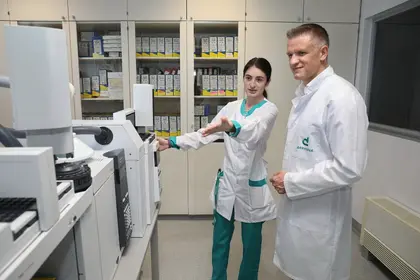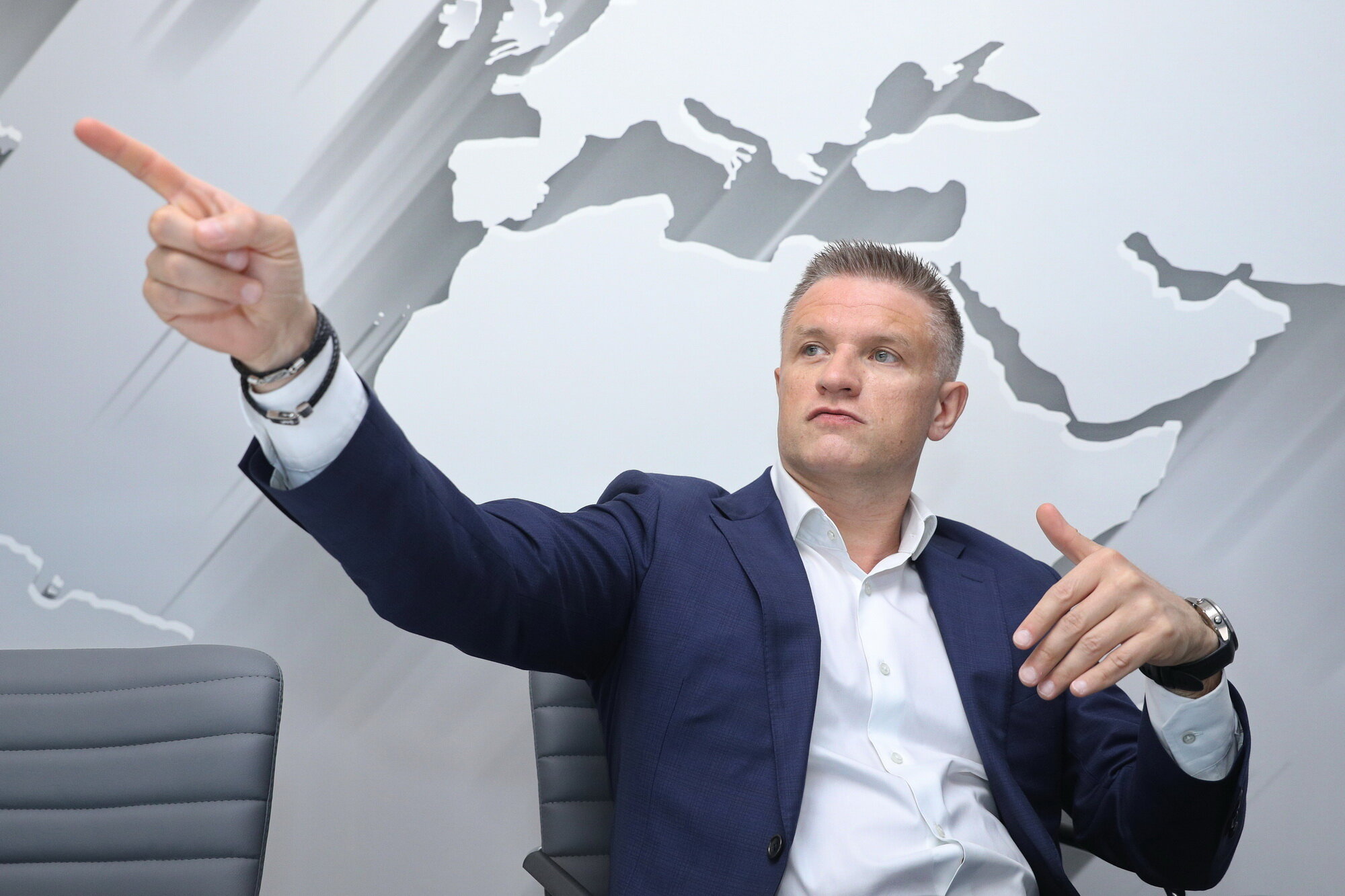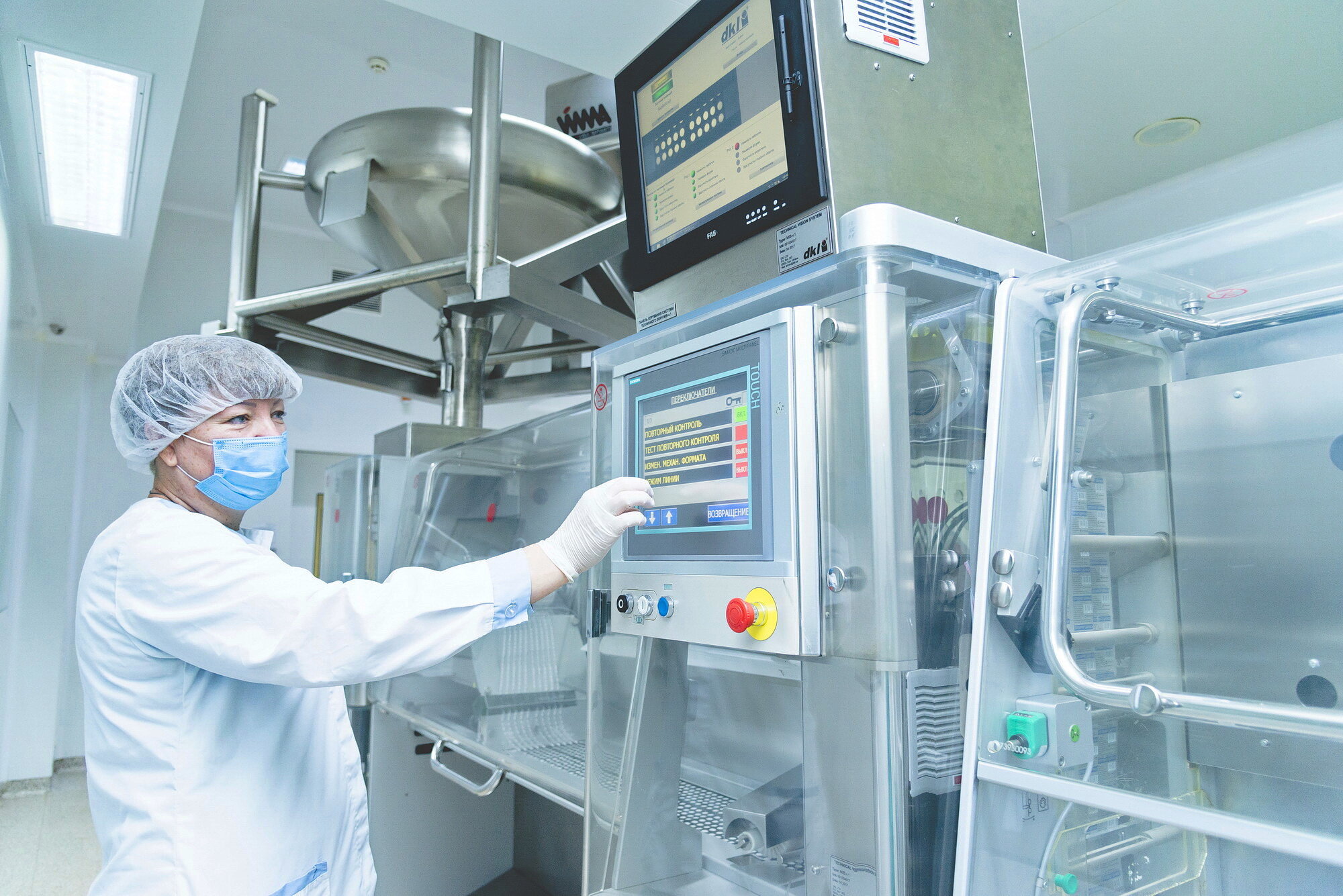Taking up the territory equivalent to 10 football pitches at the edge of Kyiv, the Darnitsa plant produces perhaps the most recognizable medication in Ukraine — Paracetamol and Citramon.
Darnitsa has always focused on the domestic market, where it sells 95% of its medication. Today most Ukrainians know the brand — its green “D” logo and affordable prices for generic drugs.
JOIN US ON TELEGRAM
Follow our coverage of the war on the @Kyivpost_official.
The 2020, dominated by the pandemic, made the company’s position even stronger. Valued at $187 million, $8 million more than a year before, Darnitsa is now the third most expensive brand in the country, after mobile operator Kyivstar and retailer Rozetka, according to the Korrespondent magazine.
The chairman of the executive board of Darnitsa Group, Dmytro Shymkiv, 45, says the company grew due to higher demand for some of its products, strong teamwork and innovations.
Recalling 2020, he says, “It was like balancing on a piece of rope, while also trying to move the business on,” he says. “When we talk about pandemics or just about any crisis, a company needs to move on. If we stop, we die.”
Whatever it was, the innovation drive or the sober crisis management, it seems to have worked: the company added 10 new medications to its portfolio of 210 brands and significantly grew its market share.
Today Darnitsa ranks second among pharmas in Ukraine, taking up a 3.6% share of the highly competitive market, where the top 10 companies control just 30%. The leader Farmak has a 5.6% share.
All eyes on health care
Darnitsa is an example of a Soviet enterprise that evolved into a modern company, much like its main competitor, the 95-year-old Farmak.
When the COVID‑19 pandemic hit Ukraine in March 2020, demand for medication jumped by 35%. While more people got sick, there were also those who just went to pharmacies to stock up, refreshing their first aid kits for possible emergencies.
Sales of one of Darnitsa’s core medication Paracetamol, which is used to treat fever and mild to moderate pain, went up by five times in March 2020, but the company didn’t raise the price from $0.54 per box. It also kept prices low for its other two bestsellers: the painkiller Citramon ($0.30) and Captopres, used to treat high blood pressure. ($2).
A month later, however, demand went down by 20%. The pharmaceutical had to perform a delicate balancing act, ensuring demand was satisfied in March while also lowering production in April to avoid overstocking.
“We needed to balance the whole year, trying to foresee things,” Shymkiv says.
Apart from balancing production, the company also needed to keep imports of raw materials from Europe, India and the Middle East steady while its employees were coming with COVID‑19. Over the year, 181 out of the total 1,016 employees got over the coronavirus.
“Uncertainty of production, of consumption, of manpower, of the situation in the country — we needed to use this uncertainty as a business opportunity and not lose the positions we had in society and business,” he says.
The company ended the financial year having $130 million in net profit, a $10 million increase compared to 2019.
Pharma is new IT
Before joining Darnitsa, Shymkiv worked as deputy head of the President’s Administration under President Petro Poroshenko. Before that, he headed Ukraine’s office of U.S. tech company Microsoft for seven and a half years.
Both jobs helped Shymkiv manage Darnitsa, where he has been since 2018. The Microsoft experience taught Shymkiv to bring innovation to an otherwise conservative industry, while the four-year experience in politics gave him an understanding of how the government communicates with business.
“I know what’s possible and what’s not,” he says.
But his tech savvy is more on display than his political prowess, even during a quick tour at the Darnitsa plant: most computers run licensed software by Microsoft, Office 365. Much of internal communication happens online, through Microsoft’s cloud service Azure.
Apart from using software for communication, the company has harnessed technologies to save on utilities and collect analytics about sales and rivals, as well as for logistics. Darnitsia’s 9-story warehouse is fully run by threerobots.
At the same time, Shymkiv admits, most people in pharma are quite conservative. “The industry itself requires conservatism. We need to preserve reliability, quality and trust of the consumer.”
The average age of the employees at Darnitsa is 40 years old.
Producing vaccines
Launching the production of vaccines is expensive. In December 2020, Chinese company Sinovac Biotech said it would invest about $500 million to increase its capacity to manufacture its flagship CoronaVac COVID‑19 vaccine.
It is also a long and complex procedure, according to Shymkiv. A lot of time is eaten up by quality control: a vaccine requires hundreds of tests. It may take from 12 to 36 months to even start shipping ready-made vaccines, let alone building and certifying a plant and producing the first batch.
There also needs to be a buyer. Ukraine’s government must promise to buy the vaccines. It’s always going to be cheaper to import vaccines from countries like India or China, because they already have the facilities and produce them in great volumes. Buying Ukrainian must be a political decision to sacrifice more of the budget to support local production.
Right now, getting enough COVID‑19 vaccine to meet the world’s needs isn’t a question of patents, it’s a question of capacity, Shymkiv says.
Making vaccines takes special plants and technologies. Darnitsa is ready to invest $20 million in a plant like this. But without guaranteed orders it will be just “an expensive hobby.” It will also take more than one year to build the facilities.
There can be no talk of developing new COVID‑19 vaccines in Ukraine — the country can only produce existing ones, Shymkiv says. But Ukraine needs to start thinking about the future.
“The risk of another pandemic is quite high,” Shymkiv says. “In 3–5 years, what will we do? Will we queue again?”
In February 2021, Deputy Health Minister Viktor Liashko, who has since become the health minister, said the ministry developed a plan to revive production of vaccines in Ukraine.
However, it hasn’t been approved by the government, and according to experts, the document suggests no concrete steps.
You can also highlight the text and press Ctrl + Enter






